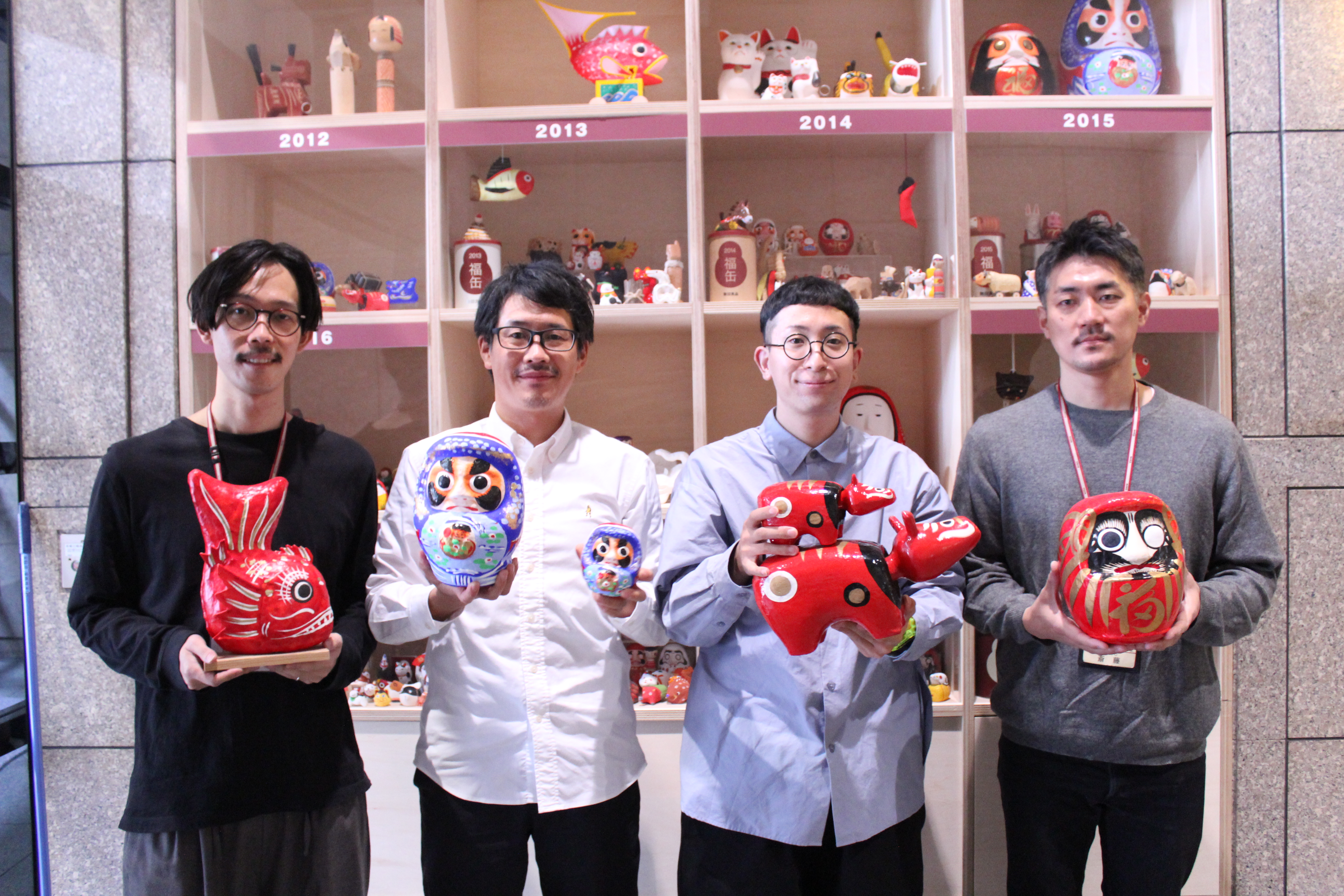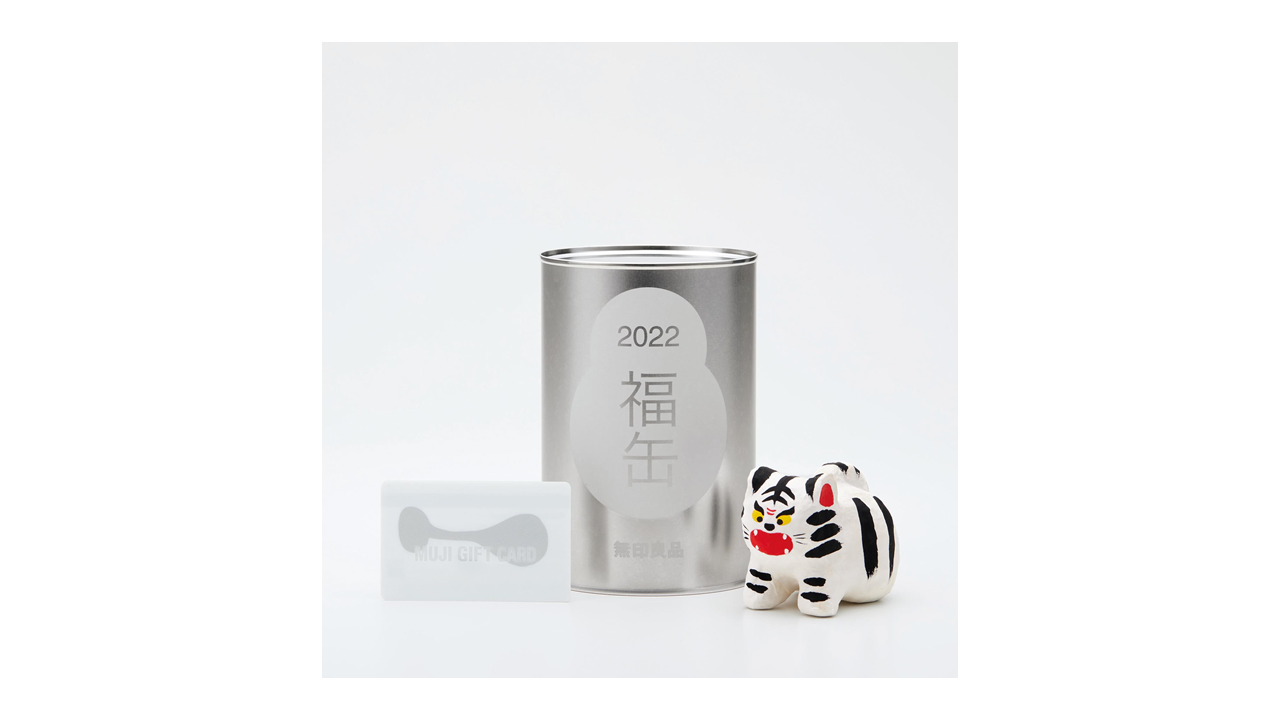
Design Office / Team Fukukan (Fortune Can)
It has been 10 years since Fortune Can was first released. The team of Design Office who developed Fortune Can shared with us the background stories of the product.
■How it started
Fortune Can was created in the winter of 2010, when we were considering a product made of can. At that time, Found MUJI had been just established, and we were looking for good items globally as well as within Japan. That was when we found local folk toys. We came up with the idea of putting the good-luck charms in cans to bring fun and excitement to customers and MUJI stores. This is how Fortune Can started.
When we were developing the project, the Great East Japan earthquake occurred, so we switched the direction of the project to helping people of Tohoku area. In fact, for the first year, all the good-luck charms included in the Fortune Cans were from Tohoku Area. Gradually the number of regions and artists who are involved in this project increased over the past years.

■Concept of Fortune Can
By introducing folk toys from all over Japan through MUJI, we hope to support traditional artisans in Japan and the bearers of new activities so that the traditions can be passed on to the next generations. Cute appearance or interesting features are the most likely factors that encourage people to pick up the folk toys at a store. However, there are artists behind the features, and knowing the artists may change the way people look at the toys.
In addition, the booklet describing good-luck charms enclosed in Fortune Can is prepared as an attempt to create an opportunity for customers and artists to connect. Until now, there was not much information about the artists on the Internet, and it was not easy for customers to connect with them. When we look for folk toys, we often get information from old books or from the town office who knows the area well. Some of domestic and foreign customers who purchased Fortune Can told us that they actually went on a trip to find good-luck charms bringing the booklet in MUJI’s Fortune Can with them. We are happy to see that the connection between the artists and customers has been established, and that folk toys are becoming more and more familiar to people.
■Communicating with the artists
The dolls in Fortune Can are basically what the artists want to put in the can, and we use their designs as they are. The color and shape of the dolls and all other elements reflect the individuality of each region. We are careful not to meddle into the design and ruin it. We stay behind the scenes, in the background. From those recommended by the artists, we choose the ones that we find naturally attractive, and not arbitrary.
We also try to find new artists every year as much as possible. However, there is not much information available on the Internet, so we often search around the 47 prefectures on foot, relying on books that describe folk art in detail. There are some people who live deep in the mountains where there is no access to the internet. We have explored their ateliers in search of good-luck charms that we have yet to see, relying on a hand-drawn map.
It is also difficult to communicate with artists who do not have a computer. It is not possible to talk about colors by FAX and email is not an option, so we communicate by letters. This is not the case in the city where you can mail a letter and it will be delivered the next day. It would take a few days to communicate with them.
■Fortune Can 10th Anniversary Exhibition "CREATIVE IMAGINATION"
Folk toys have a deep history and are filled with various "prayers" such as praying for a good harvest and children's healthy growth. In other words, it is not manufactured based on data-driven marketing, or because of its popularity and high-sales but it is naturally created, embodying "thoughts" coming from the Japanese culture and lifestyle. This exhibition is designed to discover the possibilities and hints for the future of art with such simple and pure driving force.
In addition, we would like to provide a place for the creators of folk toys to send out information so that the toys can continue to be passed on as part of Japanese culture for a long time, not just for their cute appearance.
Exhibition Period: December 17, 2021 (Fri.) - February 20, 2022 (Sun.)
Venue: MUJI Ginza 6F ATELIER MUJI GINZA
https://atelier.muji.com/jp-en/exhibition/607/
■ Future Goals of Fortune Can
We would like to expand the sales of folk toys by selling them not only in Fortune Cans, but also in the local MUJI stores, and using other channels such as Community Market. By diversifying our sales channels, we believe that we can continue to pass on the traditional Japanese culture of folk toys. We would also like to encourage artists to have the same perspective as ours and build a good relationship with us so that the culture will not be lost. For this purpose, we would like to communicate not only within Design Office, but also with the staff of the stores to get new information about folk toys from different regions.

